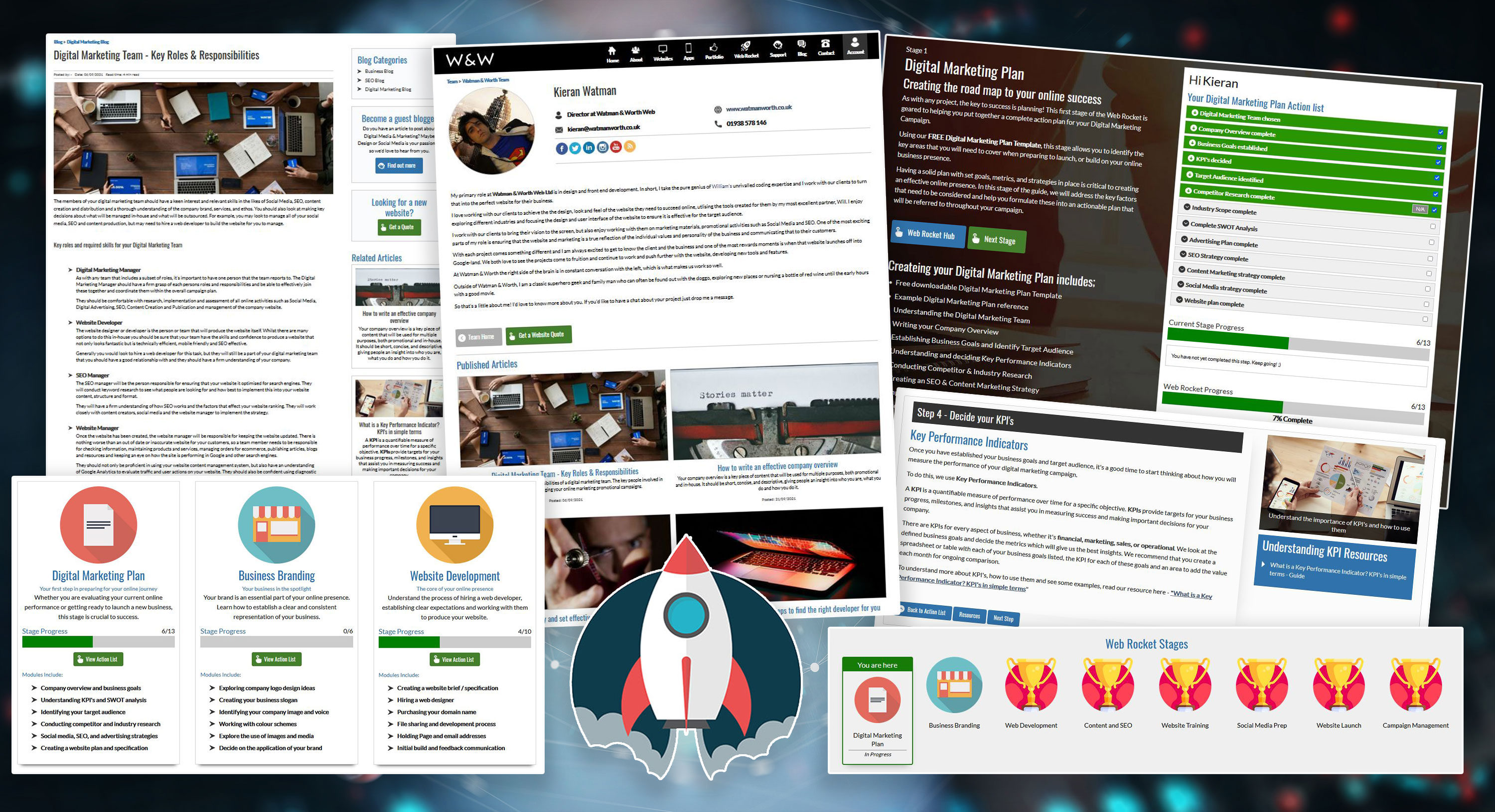Creating high quality, valuable and relevant content to reach your customers
Content marketing is one of the most effective promotional strategies. It works in conjunction with all other aspects of your digital marketing and can lead to fantastic on-site conversions.
The process of content marketing is to produce and promote high quality content which answers questions or solves a problem for the reader. It may also act as an area of interest or play a role in the customer's research.
The creation and marketing of well-researched, valuable content can drive a great deal more relevant traffic to your website. It can also raise brand awareness for your business and position you as a trusted authority in your industry.
With the additional website traffic gained from content marketing, well-optimised and structured content can then lead to converting those visitors into customers.
To achieve this primary goal of content marketing, we need to look at 5 key aspects;
Content Plan
It's important to keep your content marketing consistent, relevant and valuable. You should be sharing new content frequently, and be addressing issues that are relevant to users at the time. There may be seasonal aspects to consider as to when you publish a particular piece of content.
For example, you do not want to be publishing a helpful article on Christmas decorations in February, or a top 10 restaurants for a Valentine's Day meal in July.
To get started, you should;
- Create a Content Calendar >>, identifying key topics you may want to address at particular times of the year.
- Stick to a schedule – plan to create a new piece of content every week or month, and work in the planning, production and promotion for the right times.
- Assign roles – content production can be time-consuming when done correctly, so ensure you allocate enough time for the people implementing the strategy.
Content Research
You should first understand the types of questions, relating to your products and services, that people are asking using your previous Keyword Research >>
For example, if you are selling baby clothes on your ecommerce website, you will need to look at your keyword research and look at some of the questions being asked, such as;
- "Temperature guide for dressing newborns"
- "What to dress a baby for outdoors"
These are just two popular Google Searches that we found from keyword research. (remember, there are multiple ways to identify keywords and questions surrounding topics)
First do some research into the topic, gather your facts, unique perspectives, case studies and interesting information on the topic.
Content Production
Now we want to decide what kinds of content we can produce to directly answer these questions and provide value.
This content is not limited to our traditional product pages or service based pages. It can come in a variety of forms.
Some examples of great content formats can be;
- Blog posts
- Research articles
- Infographics
- Podcasts
- Videos
- Educational or tutorial articles / how-to guides
- Downloadable resources and e-books
Relating to our research, we may produce;
- A blog post entitled "How to dress a newborn baby for outdoors in all seasons"
- A how-to guide, such as "How to dress your newborn baby for summer"
- An infographic, showing the four seasons and demonstrating examples of appropriate newborn clothing, with advice and descriptions.
- A recorded podcast or video interview talking through the subject, offering advice and education on the topic.
Remember, you are not limited to one content type. You may want to produce the blog article for your website as the core content. Then create a downloadable guide or e-book or guide version of the article.
You might create a video and then have it on YouTube, but also embedded in the article on your website. There are a number of ways to creatively use one content idea to produce multiple media types suitable for different audiences and platforms.
You can find out more about the different types of content at the Digital Marketing Institute >>
Content Optimisation & On-page SEO
It is important when creating any piece of content to remember that your core goal is to gain more relevant website traffic and convert those visitors into customers.
- Add the core content to your website in the relevant area
- You must create clear, relevant, informative with a well-structured, formatted and easy to read page
- Ensuring you have optimised the page for SEO with the relevant key terms and phrases in headings and body text where relevant
- Complete your SEO META Data including title tags, meta descriptions and ALT tags for images
- Be sure that you have optimised the page for conversion
So in this example, when you are detailing "How to dress your newborn baby for summer", you should include links to some recommended products on your website. You are being informative and providing information, education, AND a solution to the reader's problem. Here is some more advice from the Content Marketing Institute about producing Content that Converts >>
You can learn more about Content Optimisation at SEM Rush >>
Content Promotion
Once you have your content produced and published to your website, you then need to decide where, when and how to promote each item.
- Share across your social media channels - utilise strong images, embedded videos and direct links to the core article on your website
- Reach out to website owners in your industry, with whom you have been building relationships (as identified in your SEO Link Building Strategy). They may find your content useful for their audience too and link back to it or share it across their network.
You can find out more about Content Marketing over at HubSpot >>
![]()





















